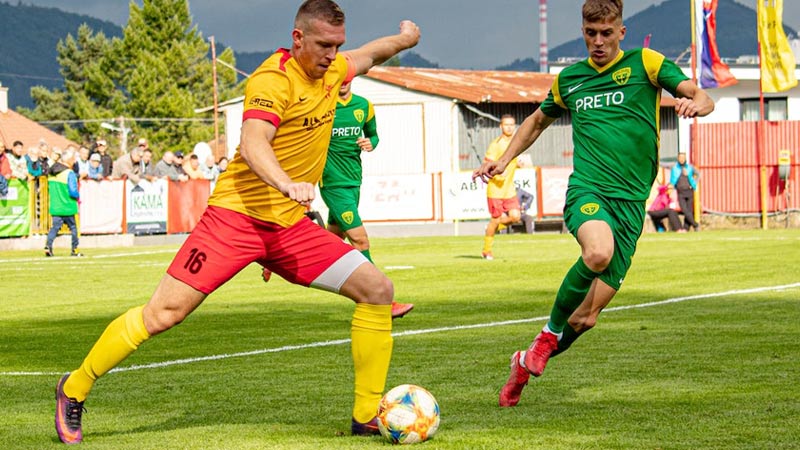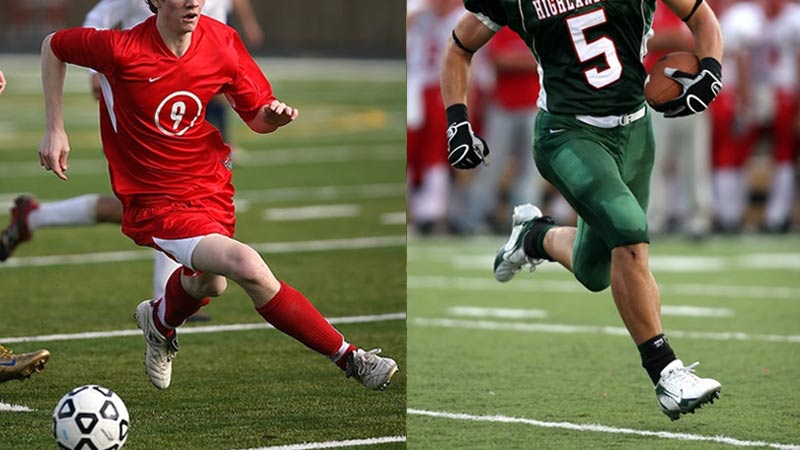Distinguishing between soccer and American football cleats unveils a nuanced interplay of design, functionality, and player demands.
As pivotal gear for two distinct sports, these athletic shoes are meticulously crafted to cater to the unique rigors of each game.
Soccer cleats, emphasizing agility and ball control, boast a lightweight build with varied stud configurations for different field types.
In contrast, American football cleats prioritize support, durability, and traction on both grass and turf, often featuring a higher cut for ankle stability.
This exploration into their divergent characteristics sheds light on the precision involved in tailoring footwear to the specific needs of each athletic pursuit.
Is There a Difference Between Soccer and American Football Cleats?
Yes, there are notable differences between soccer cleats and American football cleats, primarily due to the distinct nature of the two sports and the specific demands placed on players’ footwear in each game.
Design and Construction
- Soccer Cleats: Soccer cleats are designed for a game that involves a lot of running, quick changes in direction, and ball control.
As a result, soccer cleats are typically lightweight and feature a low-profile design to provide agility and maneuverability.
The cleats on soccer shoes are often conical or bladed, offering optimal traction on grass surfaces. - American Football Cleats: Football cleats are built to support the demands of a game that involves frequent stops, starts, and lateral movements.
They are generally more robust and often have a higher cut, extending above the ankle to provide additional support and stability.
Football cleats may have different stud configurations, including a mix of conical and bladed studs, to offer traction on various playing surfaces, including grass and turf.
Stud Configuration
- Soccer Cleats: Soccer cleats typically have a variety of stud configurations to suit different playing conditions.
Firm-ground (FG) cleats have molded studs for natural grass surfaces, while soft-ground (SG) cleats have longer, detachable studs for wet or soft fields.
Artificial grass (AG) cleats are designed for synthetic turf and usually have shorter, rubberized studs. - American Football Cleats: Football cleats also come in various stud configurations. Many football cleats have a combination of molded and detachable studs to provide traction on both grass and turf surfaces.
Some football cleats also feature a toe cleat at the front for players who need extra grip during acceleration.
Materials
- Soccer Cleats: Soccer cleats are often made with lightweight materials like synthetic leather or mesh to enhance speed and ball control. The emphasis is on agility and touch.
- American Football Cleats: Football cleats may incorporate more durable materials, and the construction may prioritize protection and support. The upper may be made of synthetic materials or leather for added durability and resistance to wear and tear.
Ankle Support
- Soccer Cleats: Soccer cleats typically have a low-cut design, providing minimal ankle support. This design allows for greater freedom of movement, which is essential for ball control and agility.
- American Football Cleats: Football cleats often have a mid or high-cut design, extending above the ankle to provide additional support and stability. This helps protect the ankle during the physical and high-impact nature of American football.
Can You Wear Football Cleats for Soccer?

No, it is not advisable to wear football cleats for soccer.
Here are the reasons why you can not play soccer with football cleats :
Stud Configuration
Football cleats often have longer studs and a different configuration compared to soccer cleats.
Soccer cleats are designed with a variety of stud patterns to suit different field conditions, providing optimal traction and minimizing the risk of injuries during quick turns and sprints.
Weight and Design
Soccer cleats are typically lighter and have a low-profile design, allowing for agility and quick movements.
Football cleats, designed for the specific demands of American football, maybe heavier and have a higher cut, which can impede the natural movement and ball control required in soccer.
Ankle Support
Football cleats often provide more ankle support with a mid or high-cut design, which may restrict the range of motion needed for soccer players.
Soccer cleats, with their low-cut design, allow for greater freedom of movement during dribbling, passing, and shooting.
Positional Differences
The nature of movements and playing styles in soccer differs from that in American football.
Soccer cleats are tailored to support actions such as quick changes in direction, acceleration, and precise ball control, which may not align with the specific requirements of football cleats.
FAQS
Can you use football cleats for soccer?
While technically possible, it is not recommended. Football cleats have different stud configurations and designs, which may impact traction, agility, and overall performance in soccer.
Can football cleats be used for soccer?
Football cleats can be used for soccer in a pinch, but it’s not ideal. The stud patterns, weight, and ankle support in football cleats may not cater to the dynamic movements of soccer.
Can I use football cleats for soccer?
While you can, it’s advisable to use soccer-specific cleats. Football cleats may hinder comfort and performance due to differences in design and functionality.
Can I wear football cleats for soccer?
You can wear football cleats for soccer, but it’s not recommended for optimal play. Soccer cleats are designed to meet the specific demands of the sport.
Can you play soccer in football cleats?
It is possible, but playing soccer in football cleats may result in challenges with maneuverability and may increase the risk of slipping or injury.
Can you use football cleats to play soccer?
Using football cleats to play soccer is possible, but it’s not the best choice. Soccer cleats are tailored to the game’s requirements for better performance and safety.
To Recap
The distinctions between soccer and American football cleats underscore the meticulous engineering required to cater to the unique demands of each sport.
From stud configuration to weight, ankle support, and playing styles, these footwear variations serve as specialized tools tailored to enhance player performance and safety.
Soccer cleats prioritize agility, ball control, and swift movements, while American football cleats emphasize support, durability, and traction on diverse surfaces.
The significance of these variances extends beyond fashion, influencing athletes’ ability to execute precise maneuvers, navigate playing conditions, and ultimately excel in their respective fields, highlighting the nuanced craftsmanship underlying the world of athletic footwear.







